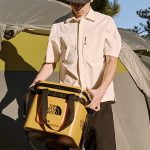Sportsman’s Warehouse, Inc. took another hit in the fiscal first quarter as continued challenges in merchandising and weak consumer discretionary spending again drove comparable store sales down in double digits for the third first quarter in a row. The last positive comp for SPWH was a 24 percent increase in Q1 2021 as the company fed off the energy in outdoor pursuits fueled by the pandemic.
The hunting, fishing, camping and shooting specialty retailer is embracing part of its name in a more profound way as 2024 progresses, promising to focus more on the “Warehouse” part of the name to provide more value for cash-strapped outdoor sports enthusiasts and better in-store layouts to create cleaner line-of-sight to find great gear more easily, among other measures. The retailer also appears to have addressed aged inventory issues and is now going department by department to clean up merchandising and service as they work to turn the business back in the right direction.
Based on comments from company CEO Paul Stone during a conference call with analysts, the limited good news for the first quarter came out of the revamped Fishing and Camping departments, a successful inventory clean up effort, and the fact that fiscal Q1 is historically the smallest quarter of the year for the retailer.
Net sales were $244.2 million in the fiscal first quarter ended May 4, compared to $267.5 million in the first quarter of fiscal year 2023. The 8.7 percent ($23.3 million) year-over-year (YoY) net sales decrease was said to be primarily due to lower sales demand due to the impact of consumer inflationary pressures, decreasing discretionary spending, partially offset by the opening of 11 new stores over the last year.
Same-store sales decreased 13.5 percent during the first quarter, on top of a 17.8 percent comp sale decline in the year-ago first quarter period.
Company CFO Jeff White added that the persistently high inflation weighing on consumer discretionary spending was particularly evident in Firearms and Ammunition sales.
“During the first quarter, consistent with the [NSSF-]adjusted NICS data, our Hunting department sales were down about 7 percent versus the prior year,” Stone added. “While we continue to outpace the adjusted NICS on a unit basis and take share, fewer customers purchased firearms and ammunition during the quarter, which was the primary driver of the Q1 decline.”
As previously reported by SGB Media, the April 2024 NSSF-adjusted National Instant Criminal Background Check System (NICS) figures declined 11.2 percent year-over-year to 2,497,577 checks. March NSSF-adjusted NICS declined 7.4 percent year-over-year to 1,442,061 and February NSSF-adjusted NICS checks were essentially flat (-0.1 percent) to 1,343,478 to start the fiscal year.
Stone said the sales declines were widespread across other departments, and particularly tough in Apparel and Footwear, but they had some upside from an inventory perspective.
Camping was reportedly down approximately 6 percent YoY, Apparel was down approximately 26 percent YoY, and Footwear was down about 28 percent YoY.
“While these departments were down in Q1, they outpaced the decrease in year-over-year inventory levels, which we view as encouraging,” Stone noted.
“I want to remind everyone that the first quarter is our lowest volume quarter of the year, particularly the months of February and March, given the seasonal nature of our specialty outdoor gear business,” Stone said. “Although Q1 is the lowest volume quarter of the year, we were not happy with our results, particularly the trends in our Hunting and Shooting Sports department.”
He said traffic was challenging during the quarter, suggesting they are moving “at a high velocity” to improve the trends of the business.
“Having moved through a significant amount of distressed inventory during the second half of last year, we are now slowly building back inventory in these departments with brand relevance, newness, and depth with key vendors, putting us in a much better position for our key hunting and holiday seasons,” the CEO suggested. “Having the right merchandise that resonates with our core customer will continue to be a key strategic driver of our inventory management efforts during 2024.”
Stone said Sportsman’s Warehouse started to see trends improve in the Fishing category in mid-March, resulting in positive comp sales growth in the department for the quarter.
“Our stores were set early with newness and depth in key seasonal items, positioning us to capture both demand and a greater share of the fishing market,” he detailed. “We saw good results with our opening- and mid-price point items like rod and reel combos, tackle boxes, and fly fishing.”
He said this is a prime example of where the SKU rationalization is working, allowing for depth and the right mix of core items.
“We will continue to lean into Fishing with relevant purchases and regional merchandising, as Q2 is the highest penetrating quarter for this department,” Stone continued, giving a nod to the merchant and store operations teams for how quickly they executed to have the stores positioned and ready early for the spring fishing season.
The CEO said they will be making improved assortment and store visual layout enhancements similar to the what was accomplished in the Camping and Fishing departments in the first quarter. He said they expect to have these efforts completed in time for the key fall selling season.
“What we are currently seeing with the consumer is a hunt for newness and value when they shop our stores,” Stone explained. “We have made significant progress over the last couple of months to reset our stores with improved sightlines, end caps presented with high margin and high attachment items, more strategic driven aisles, and improved feature space. We have emphasized products with newness and value that align with key outdoor seasons to highlight these critical selling spaces.”
Given his comment about the consumer’s the hunt for value, Stone said they believe that leaning into the “Warehouse” part of the store name has never been more important to attract and retain customers.
“Our messaging for this competitive Warehouse advantage will be centered on no-frill shopping, quality products at affordable prices, get in easy, find what you need easy, and get outdoors-making memories,” he explained.
“We are also further refining our marketing mix model to better understand what resonates with our customers and further expand our omni-channel reach and effectiveness,” Stone noted in his prepared remarks. “Our short-term emphasis will be focused on leveraging our loyalty platform and total customer database to win back customers we know already shop our stores. With this approach, we can be more efficiently and effectively deploy capital as we carefully execute our digital marketing strategies.”
In an effort to drive more consumers into our stores, Stone shared that they have implemented more aggressive promotional activities during the second quarter.
“Our goal is to win the 100 days of summer and give customers a compelling reason to visit and shop our website and stores,” he said. “For us, the second quarter is highlighted by Memorial Day, Father’s Day and the Fourth of July, which are all high-volume periods for our business. We feel good about our store sets, product assortment and inventory levels of key items as we navigate through these key summer seasons.”
Income Statement
Gross margin for the first quarter was reported at 30.2 percent of net sales in the first quarter, compared to 29.9 percent in the prior-year Q1 period. White said the 30 basis-point improvement was primarily driven by improved mix and rate from the Fishing department, which carries a higher overall margin profile.
As a percentage of net sales, SG&A expense was 38.6 percent in fiscal Q1, compared to 37.0 percent in the prior-year first quarter.
“In absolute dollars, SG&A was down $4.6 million year-over-year, reflecting our cost cutting and expense management efforts implemented over the last few quarters. While rent and depreciation expenses were up $3.7 million versus last year due to 11 new stores, those increases were offset by a $7.3 million decrease in payroll and pre-opening expenses,” White detailed.
On a per store basis, SG&A expenses dollars in Q1 were said to be down 12.3 percent versus Q1 of 2023.
“As part of our ongoing expense reduction efforts, during the first quarter we identified an additional $5 million to $7 million of annualized cost savings that will benefit both SG&A and gross margins,” White noted. “This is in addition to the $25 million of annualized expense reductions currently being realized. We expect to begin realizing these cost reductions during the second quarter. We will continue to look for areas of the business where we can reduce expenses, simplify the business, and drive top-line growth.”
Stone said that given the challenging macroeconomic environment and the top-line headwinds the company is currently facing, it is critical it continues to focus on the areas of the business where management has greater control.
“We were pleased with our expense management efforts, reducing overall costs by $4.6 million versus the prior-year first quarter. By lowering our cost structure, we have positioned ourselves to generate positive free cash flow during the year, even on these reduced comps,” Stone said.
The retailer’s net loss for the first quarter was $18.1 million, or a loss of 48 cents per diluted share, compared to a net loss of $15.6 million, or a loss of 42 cents per diluted share, in the first quarter of fiscal year 2023. White said the increases in rent, depreciation and interest expense contributed $4.5 million to the year-over-year increase or 12 cents per diluted share.
Adjusted net loss was $17.8 million, or a loss of 47 cents per diluted share, compared to an adjusted net loss of $14.8 million, or a loss of 39 cents per diluted share, in the first quarter of fiscal year 2023.
Adjusted EBITDA was $8.7 million, compared to $7.8 million in the corresponding prior-year period.
Balance Sheet
Total inventory at the end of the first quarter was $391.7 million compared to $469.5 million at the end of the first quarter of 2023, a decrease of $77.9 million. White said this equates to a decrease of approximately 22 percent on a per store basis.
“Compared to the end of 2023, which is the lowest level for inventory during the year, we are up $36.9 million as we were able to appropriately buy into the key spring and summer seasons with both new and relevant inventory. We are now in a much better position to seamlessly transition in and out of seasons with our inventory, allowing us to be more productive as we work to improve our terms,” White said.
“We are pleased with the overall health of our inventory, with total inventory down about $75 million versus this time last year,” White added in his comments. “We have significantly more newness and relevance in our inventory, which is evident when you visit our stores.”
The CFO went on to say that given the improvement in processes, rationalization of slow-moving SKUs, and non-performing vendors, and the health of current inventory, SPWH expects to end the year with less inventory than year-end 2023.
“While we believe inventory will be lower, it will be the right inventory in the right stores to better support and serve our customers,” White emphasized.
Sportsman’s Warehouse ended the first quarter with a debt balance of $164 million and total liquidity of $80.8 million.
White said inventory management and tightly controlling variable expenses will remain a primary focus throughout the organization throughout 2024, and they will continue to prioritize the use of excess-free cash flow to pay down debt.
Outlook
“We continue to focus our efforts on long-term measures and reiterate our guidance for the full year,” White concluded in his prepared comments.
- Fiscal 2024 net sales are forecast in the range of $1.15 billion to $1.23 billion;
- Adjusted EBITDA for fiscal 2024 is estimated to be in the range of $45 million to $65 million; and
- CapEx for 2024 is estimated to be between $20 million and $25 million relating to technology investments to improve store service and merchandising productivity, as well as normal store maintenance.
“Although we are dealing with difficult macroeconomic headwinds, we remain optimistic about 2024,” CEO Stone said, wrapping up the prepared comments. “We are in the early innings, call it the third inning of a reset, and look to see progress as we move through the year. We are positioning ourselves for a relaunch of our stores in early fall, setting us up for a successful back half of the year.”
He said the company’s strategic edge remains as the premier local and convenient choice for consumers.
“We provide a strong mix of value, quality, selection and service that we know will benefit the customer. Our focus remains on the areas of the business we can control. Through close management of our variable expenses, inventory levels and merchandise margins as we work with urgency to get our top line trends moving in the right direction,” Stone continued.
“We are making the necessary investments and improvements in our stores to better convert and capture a greater share of customers’ wallet. The strategies are in motion and implementation is well on its way. We are laser focused on providing great gear and exceptional service as we look to grow this company and create value for our shareholders,” the CEO concluded.
















